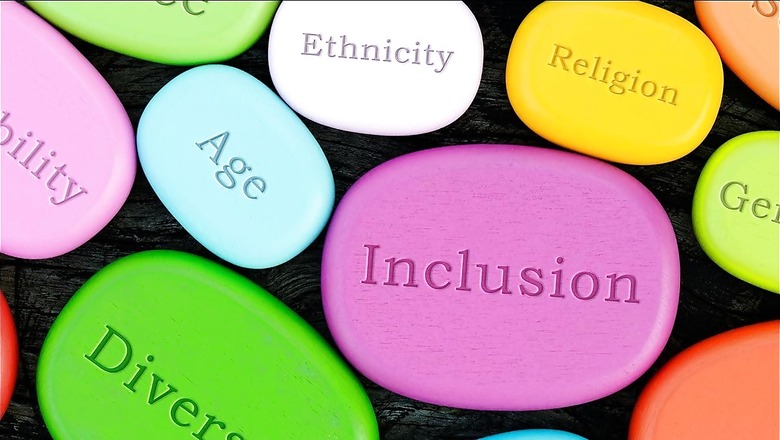
views
Toilets are essential for human health and dignity, but they are not one-size-fits-all. Different cultures have different practices and beliefs around sanitation, hygiene, privacy, and gender. Designing toilets that respect and accommodate these differences can promote cultural sensitivity, social inclusion, and human rights.
Particularly when it comes to gender, cultural aspects can play an outsized role. In pre-colonisation India, the Hijra community’s legacy stretched far back into the mists of time. A vibrant social group embracing transgender individuals, intersex people, and eunuchs, they have been considered both revered and enigmatic, assuming special roles in royal courts and cultural ceremonies. Yet, as the winds of change brought about by colonial rule swept over India, the societal attitudes surrounding the Hijra community altered, subjecting them to marginalisation and stigmatisation. Over three centuries of colonial rule, we relegated them to the fringes, stripping them of their fundamental rights and denying them countless opportunities.
Today, toilets in India are segregated on the basis of a binary understanding of gender – you can either use the men’s toilet, or women’s. By doing so, we invalidate the existence of anyone who doesn’t identify as male or female. We send the message that the ‘right’ kind of gender identity is the male and female one, and anyone else who falls outside of those two, is automatically othered.
Thankfully, these attitudes are now changing. In 2014, the Supreme Court of India officially acknowledged Hijras as a ‘third gender’, paving the way towards safeguarding their legal rights and ensuring their protection. According to the 2011 Census, there are 4.88 lakh transgender individuals in India, of which 55,000 are children. And they all need to go to the toilet, just as we do. The Supreme Court set another precedent by establishing nine gender-neutral bathrooms within the august corridors of the Court itself.
While this initiative is a bold, impressive start, we still have a long way to go. As we’ve seen with the execution of the Swachh Bharat Mission, change takes time. We can construct toilets for every Indian, but if we don’t address the behavioural change aspects, and if we don’t show cultural sensitivity, we are setting ourselves up for an uphill climb.
Why is cultural sensitivity important in toilet design?
Toilets are not just functional spaces, but also social and symbolic spaces. They reflect and shape people’s identities, norms, and expectations. They can also influence people’s access to education, health care, employment, and public life.
According to the World Health Organization (WHO), 1.7 billion people in the world lack access to basic sanitation facilities, such as toilets or latrines. This poses serious risks to their health, safety, and dignity. However, providing toilets is not enough to ensure their use and maintenance. Toilets must also be acceptable, appropriate, and affordable for the intended users.
Here are some key preferences that change based on culture:
- Some users prefer squatting toilets over sitting toilets, as they feel more comfortable, hygienic, and natural.
- Some users prefer flush toilets over pit latrines, as they feel more modern, convenient, and odourless.
- Some users prefer composting toilets over septic tanks, as they feel more eco-friendly, cost-effective, and productive.
- Some users prefer using water over paper for cleansing, as they felt more clean, refreshed, and respectful of their religious beliefs.
- Some users preferred using bidets over buckets for water supply, as they felt more efficient, easy, and discreet.
- Some users prefer having toilets within their homes over outside their homes, as they feel more safe, private, and accessible.
- Some users prefer having toilets separate from bathrooms over those which are combined with bathrooms, as they feel more sanitary, spacious, and orderly.
- Some users prefer having toilets with windows rather than without, as they feel more ventilated, bright, and pleasant.
- Some users prefer having gender-segregated toilets over gender-neutral toilets, as they feel more comfortable, secure, and modest.
- Some users prefer having toilets with locks, as they feel more protected, confident, and dignified.
- Some users prefer having toilets with ramps, rails, and seats, as they tend to be more accessible, supportive, and comfortable for people with disabilities, elderly, or children.
These preferences vary across regions, communities, and individuals. They also change over time, as people adapt to new situations, technologies, and influences. Therefore, designing toilets that cater to the diverse and dynamic preferences of the users is a complex and challenging task.
While designing toilets that ignore or violate these cultural aspects can lead to low adoption, misuse, vandalism, abandonment of the facilities, and even conflict amongst its users, designing toilets that respect and accommodate these cultural aspects can have the opposite effect. Users that feel heard and respected tend to take better care of the premises, creating little havens of harmony and mutual respect.
India’s Wins
Here are a few toilet designs that have worked exceptionally well.
The Sulabh Shauchalaya:
- This is a low-cost public toilet system that uses a twin-pit pour-flush technology.
- It provides both squatting and sitting options for the users.
- It also provides water for cleansing and washing.
- It recycles the wastewater for gardening or flushing.
- It converts the human waste into biogas for cooking or lighting.
- It charges a nominal fee for the use and maintenance of the toilets.
- It employs local people, especially women, as caretakers and cleaners of the toilets.
- It also provides health education and social services for the users.
- It has been widely adopted across India and abroad as a model of sustainable sanitation.
The Eram Scientific Toilet:
- This is a high-tech public toilet system that uses a remote-controlled e-toilet technology.
- It provides a fully automated and self-cleaning toilet experience for the users.
- It has sensors that detect the presence of the user and activate the flushing, cleaning, and disinfecting mechanisms.
- It has solar panels that power the toilet functions and generate surplus electricity.
- It has a mobile app that allows the user to locate, access, and rate the toilets.
- It also has a web portal that allows the operator to monitor and manage the toilets.
- It has been installed in various public places such as schools, parks, bus stations, and tourist spots.
The Gramalaya Toilet:
- This is a community-based toilet system that uses a participatory approach.
- It involves the users in the planning, design, construction, and management of the toilets.
- It provides toilets that are culturally appropriate and acceptable for the users.
- It uses local materials and skills to build the toilets.
- It educates and motivates the users on sanitation and hygiene practices.
- It empowers and supports the users to form self-help groups and federations to sustain and improve the toilets.
We now need solutions that combine these winning designs with the tenets of gender inclusive toilet design, to ensure that the advantages of having safe and hygienic toilets are extended to the LGBTQ+ community as well.
What are the key tenets of Gender Inclusive toilet design?
Inclusive toilets are toilet facilities that are designed to accommodate the diversity of human bodies and identities. They are also known as gender-neutral, all-gender, or unisex toilets. Inclusive toilets can take different forms, such as single-stall or multi-stall units, but they share some common features:
- They do not segregate users based on their sex assigned at birth, gender identity, or gender expression.
- They have clear and respectful signage that indicates that they are open to everyone.
- They have adequate privacy and security measures, such as locks, curtains, or partitions.
- They have accessible features for people with disabilities, such as grab bars, ramps, or lower sinks.
Finding a way forward to an inclusive future
As we can see, combining the wins from these two approaches isn’t rocket science. Whether it’s the Sulabh Shauchalaya, the Eram Scientific toilet or the Gramalaya toilet, it isn’t hard to apply gender neutral design principles to all of them. Just as with the Swachh Bharat Mission that saw enormous participation from grassroots organisations, NGOs, government bodies, celebrities and influencers, this cause too, is in need of allies. Nothing moves the needle farther than corporate involvement – especially when coming from an invested source.
Harpic, India’s leading brand in the lavatory care segment, understands better than most that the significance of toilets far extends that of a functional space. António Guterres, United Nations’ Secretary-General has written that toilets save lives. When we don’t provide clean and safe toilets to women at schools, they drop out. When transgender, intersex and non-binary people don’t have gender neutral bathrooms and must use gendered spaces, they are at risk of being verbally harassed in public restrooms, physically attacked, and sexually assaulted. Toilets are an integral part of the United Nations Sustainable Development Goals (SDGs), which call for ensuring access to water and sanitation for all, and reducing inequalities based on gender, disability or any other status.
We need gender inclusive toilets, because gender isn’t limited to just male and female.
Which is why Harpic has embraced this call for change. With open hearts and a deep understanding, Harpic has taken remarkable strides to ensure that its products cater to the rich tapestry of society, which includes the LGBTQ+ community. Recognizing that education is the key to transforming attitudes, Harpic has launched inspiring campaigns that illuminate the beautiful diversity of gender identities. Through these powerful initiatives, society is awakened, nurtured, and encouraged to create environments where acceptance thrives.
At the pinnacle of these initiatives, sits Harpic and News 18’s Mission Swachhta aur Paani: a movement that recognizes the profound significance of toilets, viewing them not merely as functional spaces but as beacons of safety and acceptance for the marginalised. This exceptional mission is built upon the firm belief that clean and inclusive toilets are vital for fostering a society that embraces and empowers us all, unconditionally.
With unwavering dedication, Harpic and News18 actively include and advocate for the LGBTQ+ community, propelling the message that every individual deserves access to safe and accepting spaces, where their dignity is upheld, and their presence is celebrated. By encouraging dialogue, by creating a space where allies can educate themselves, and by giving grassroots movements and NGOs a larger platform to draw support from, Mission Swachhta aur Paani is enabling partnerships and allegiances that help multiply each other’s reach and impact.
This is how we create just and equitable societies – by amplifying each other’s voices. Join us here, to learn more about how you can contribute to this historic national conversation.



















Comments
0 comment